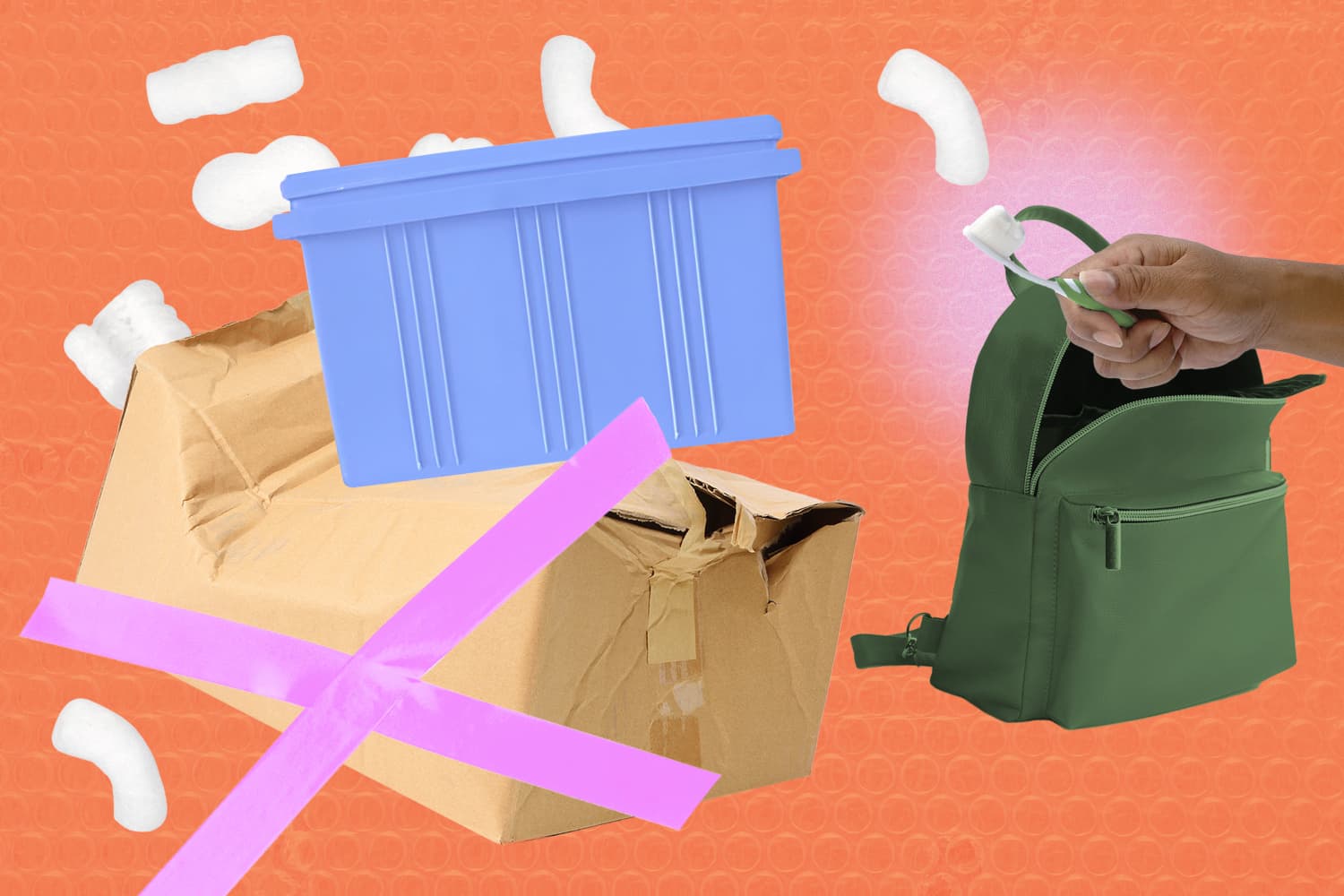
Everyone has seen lists of what not to do when packing for a move in general. But what about packing individual boxes? You can make so many mistakes when packing each specific box, whether it’s for books, shoes, fragile items, or something else. Here’s what the experts say most people get wrong when packing a moving box.
Ah, the joys of packing a box just to have the bottom fall out and all of your expert Tetris-fitting going to waste. Nobody wants that. So don’t make your box too heavy in the first place!
“Make sure you look at the bottom of the cardboard box to find the stamp that shares the maximum weight the box can handle,” says Ross Sapir, founder and CEO of Roadway Moving. “Every manufacturer needs to test their boxes and label them correctly.”
Using the wrong type of box.
Cardboard boxes are the most-used moving box, but they’re not always the best. “One mistake people make when packing is using a regular cardboard box for a box that won’t get opened for a while,” says Nicole Gabai, founder of B. Organized. “If your box has something fabric in it, and it will be going in the garage for a while, don’t use a cardboard box.”
Plastic totes with rubber gasket seals are ideal for things that need protection from air and moisture, and if the things inside need to be stored in the basement. And you’ll also want to make sure your cardboard is sturdy enough. It’s great to pass around cardboard boxes with your friends for various moves, but if the cardboard isn’t thick enough, it’ll easily break.
Don’t do it! How do you plan to brush your teeth the night before or the first night in your new home if you can’t find your toothbrush?
“Bring the items you’ll need for a smooth end to the night in a tote or backpack,” says Ashley Graber, co-owner of Cool Hand Movers. “You’ll be happy not to spend your first night in your new home wading through moving bins looking for your retainer.”
Improperly packing things that can leak.
If you have open and resealed containers of liquid or powder, or even new ones that haven’t been opened yet, be absolutely certain they’re wrapped and sealed tightly in plastic before you put them in a box. If they leak, they’ll likely destroy way more than you think. Even Lysol wipes and wet Swiffer pad containers can leak.
“We once opened a truck that had driven across the country with a can of paint that had not been properly sealed,” says Nancy Zafrani, general manager of Oz Moving & Storage. “The inside of the truck looked like a Jackson Pollock painting.”
Similarly, you don’t want to pack anything wet or damp, like laundry that’s not fully dried or towels used after you showered the morning of the move. That’s a recipe for mold and mildew.
Overpacking a box means that it likely won’t hold together very well. You’re putting an awful lot of responsibility on your tape!
“I always like to test a box by making sure it is able to be lifted without a stress or strain on the closures,” says Leslie Kilgour, professional home and office organizer, and founder of Get It Straight. “Take a 360-degree look at the box and make sure the closures aren’t stretching too thin or wearing off.”
You don’t want to overpack, but you also don’t want to underpack. Make sure every space in the box is filled, if not with packed items, then with padding or some other type of filler. Otherwise, the boxes will buckle.
“We see this all the time,” says Sapir. “The boxes look good on the outside, and then when you start to move them and stack them on other boxes, they get crushed and need to be repacked.”
NB: Ratingmania is a place to find the finest discounts on the internet and all the necessities.
Source url www.apartmenttherapy.com
Moving,packing,Tips & Techniques,team:real estate,platform:search,platform:social








